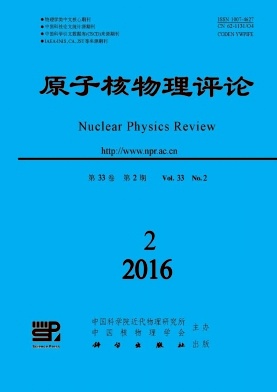Alpha Decay as a Probe of the Structure of Neutron-deficient Nuclei Around Z =82
doi: 10.11804/NuclPhysRev.33.02.235
- Publish Date: 2016-06-20
-
Key words:
- alpha /
- decay /
- alpha formation probability /
- shell effect /
- /
- /
- neutron-deficient nuclei
Abstract: In this contribution I would like to review briefly our recent studies on nuclear α formation probabilities in heavy nuclei and their indication on the underlying structure of the nuclei involved. In particular, I will show that the empirical α-formation probabilities, which can be extracted from experimental half-lives, exhibit a rather smooth function with changing proton or neutron numbers. This allows us to distinguish the role played by pairing collectivity in the clustering process. The sudden hindrance of the clustering of the nucleons around the N = 126 shell closure is due to the fact that the configuration space does not allow a proper manifestation of the pairing collectivity. The influence of the Z = 82 shell closure on the α formation properties will also be discussed. Moreover, we have evaluated the α-decay fine structure to excited 0+ states in Hg and Rn isotopes as well as the α-decay from the excited 0+ states in the mother nucleus. It is thus found that the α decay is sensitive to the mixture of configurations corresponding to different nuclear shapes.
| Citation: | QI Chong. Alpha Decay as a Probe of the Structure of Neutron-deficient Nuclei Around Z =82[J]. Nuclear Physics Review, 2016, 33(2): 235-241. doi: 10.11804/NuclPhysRev.33.02.235 |






 甘公网安备 62010202000723号
甘公网安备 62010202000723号 DownLoad:
DownLoad: